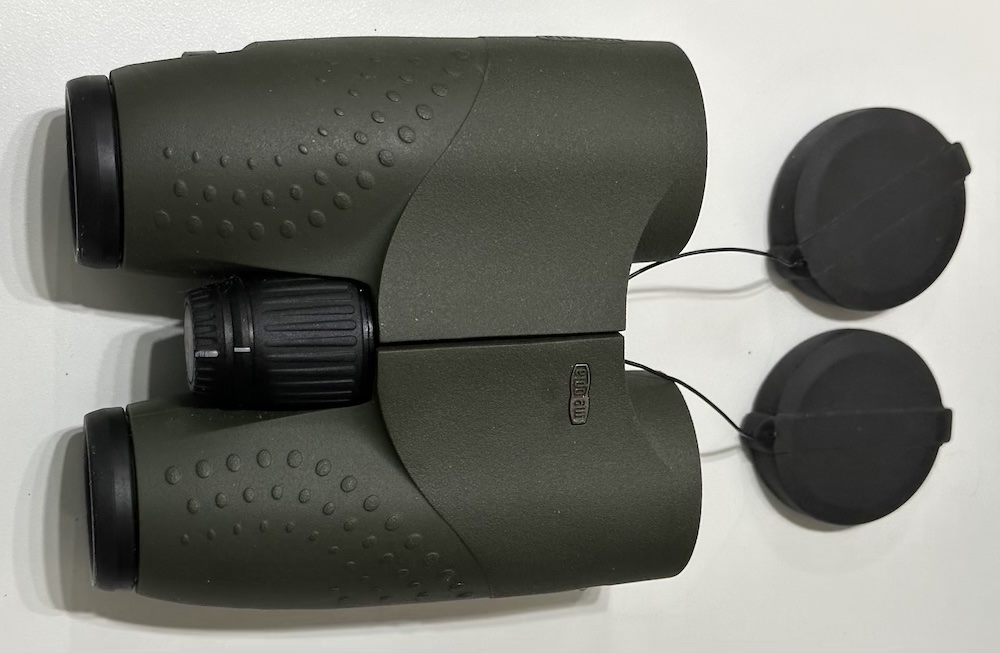Guest Blogger Fatbirder
Binoculars are an essential tool for birdwatchers, providing the ability to view birds up close and in detail. But not all binoculars are equally useful for birdwatching, there are certain features to look for to ensure you have the best experience possible.

In this article, we will explain what you need from binoculars and which features and options are most useful for birdwatching. This should also help you better understand reviews you read of different makes and models being field-tested.
Magnification
One of the most important features to consider when choosing binoculars for birdwatching is magnification. Generally speaking, a magnification of between 7x and 10x is what birders need. A magnification of 8x is the most common and provides a good balance between magnification and stability. Higher magnifications may provide more detail, but they can also make the image appear shakier, making it harder to focus on the bird. When you are birding in woods and other closed in habitats you need the lower magnification as you are generally looking at objects closer to you. Lower magnifications usually mean the lens size is smaller too. So 8x magnification is usually 32mm objective lens size.
Objective Lens Size
The objective lens is the lens at the end of the binoculars that is furthest from your eyes. It determines how much light is gathered and, therefore, how bright the image appears. A larger objective lens will gather more light and provide a brighter image, but it also means a larger, heavier pair of binoculars. This is usually expressed as the size of the lens in millimetres. A lens size of around 40mm is a good balance between image brightness and weight and most often goes with a larger magnification. Birding binoculars for wetlands and open landscapes where birds tend to be further away are best viewed with 10 x 42 binoculars.
Image Quality
Image quality is another crucial factor to consider when choosing binoculars for birdwatching. Look for binoculars with high-quality optics that provide a clear, sharp, and detailed image. Binoculars with high-quality coatings on the lenses can also reduce glare and provide better colour reproduction, making it easier to distinguish different bird species. ED or HD lenses are now the standard, do not settle for less.
Field of View
Field of view is the width of the image you can see when looking through the binoculars. A wider field of view can make it easier to spot and track moving birds. However, a wider field of view often means a lower magnification and reduced detail. Consider the type of birding you will be doing and choose a field of view that suits your needs.
Eye Relief
Eye relief is the distance between the eyepiece and the viewer’s eye when the binoculars are in focus. A longer eye relief is important for birders who wear glasses or sunglasses. Birders typically look for binoculars with an eye relief of around 14mm to 18mm. Retractable eye-cups are helpful for spectacle wearers too, as sometimes its better for one’s spectacle lenses to be tight against the binocular’s lenses.
Dioptre Adjustment
Most of us do not have exactly the same eyesight in both eyes. In fact, it’s not unusual to be long-sighted in one and short-sighted in the other. This is where a dioptre comes in, it is a way to adjust one of the lenses so that the focus and clarity match the other. In better binoculars the amount of adjustment possible will be greater than in cheap and cheerful models.
Durability
Birding takes place outdoors, often in rugged environments and unpredictable weather, so durability is an essential consideration. Look for binoculars that are waterproof and fog-proof to ensure they can withstand exposure to rain, humidity, and dew. A rubber coating or armour can also provide shock absorption and protect the binoculars from bumps and drops.
Weight and Comfort
Finally, consider the weight and comfort of the binoculars. Birding can require extended periods of observation, so you want a pair of binoculars that won’t strain your neck or cause fatigue. Look for lightweight binoculars with comfortable grips and adjustable eyecups to ensure a comfortable viewing experience.
Part of comfort is the carrying strap. The best makers included a wide, padded strap that better distributes weight and will not cut into bear skin. Rain-guards and dust-caps also protect the lenses. Birders should remove sand and dust from lenses with a soft cloth or, better still, a brush. Keeping your equipment clean after each trip will ensure their longevity.
Appearance
For the most part the look of the binoculars makes no difference to their use, excepting that bright colours or shiny surfaces may disturb the wildlife you want to watch. However, we all have ascetic sensibilities so how they look will probably matter to you. All metal cased binoculars used to be black but can now be almost any colour. However, most birders prefer dull colours with black, dark grey and dark green being the most favoured
So, when choosing binoculars for birdwatching, consider the magnification, objective lens size, image quality, field of view, durability, weight, and comfort. By finding a pair of binoculars that meet these criteria suitably, you can enjoy a comfortable and satisfying birdwatching experience with sharp, clear, and detailed images of the birds you’re observing.
